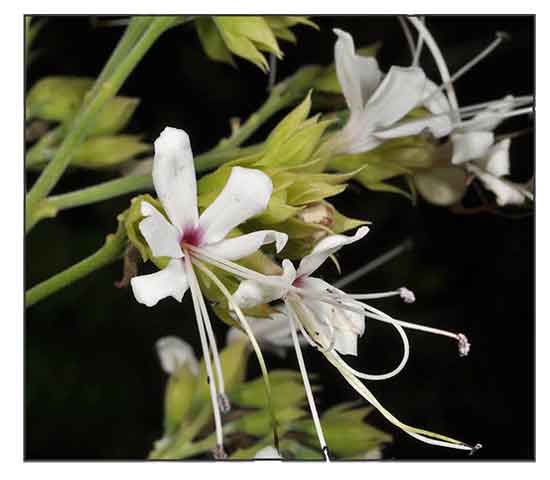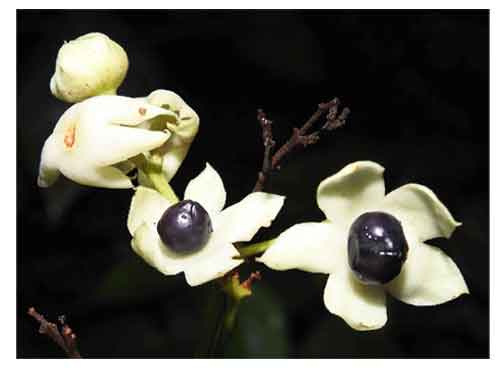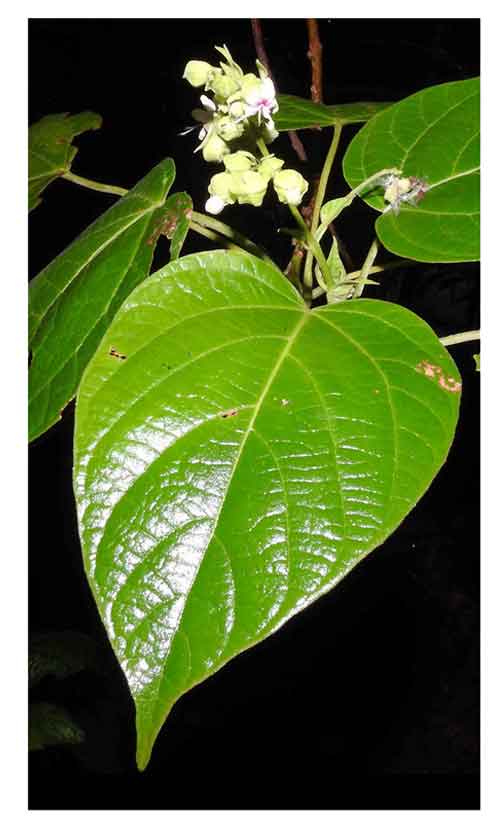
Family • Lamiaceae
Anoran
Clerodendrum villosum Blume
DOWNY CLERODENDRUM
Juan mao da qing
| Scientific names | Common names |
| Clerodendrum confusum Hallier f. | Anoran (Philippines) |
| Clerodendrum currani Elmer | Downy clerodendrum (Engl.) |
| Clerodendrum ferrugineum Turcz. | Fuzzy clerodendrum (Engl.) |
| Clerodendrum inforunatum Dennst. | Hairy clerodendrum (Engl.) |
| Clerodendrum molle Jack | |
| Clerodendrum velutinum B.Thomas | |
| Clerodendrum velutinum Wall. | |
| Clerodendrum villosum Blume | |
| Clerodendrum villosum var. macrocalyx Moldenke | |
| Clerodendrum villosum is an accepted species. KEW: Plants of the World Online | |
| Other vernacular names |
| CHINESE: Juan mao da qing. |
| MALAY: Labu-labu. |
| VIETNAMESE: Ngoc nu long. |
Constituents Properties Studies Availability |
May 2024
![]()
 |
| PHOTOS / ILLUSTRATIONS |
| IMAGE SOURCE: Lamiaceae : Clerodendrum villosum / Flower / Copyright © 2014 by P B Pelser & J F Barcelona (contact: pieter.pelser@canterbury.ac.nz) [ref. DOL90243] / Non-Commercial Use / Image modified / Click on image or link to go to source page / Phytoimages.siu.edu |
| IMAGE SOURCE: Clerodendrum villosum / Fruits / Copyright © by Kishor Deka - fpr Assam Biodiversity Portal / Non-Commercial Use / Image modified / Click on image or link to go to source page / eFloraOfIndia |
| IMAGE SOURCE: Clerodendrum villosum / Leaves and flowers / Copyright © by Kishor Deka - fpr Assam Biodiversity Portal / Non-Commercial Use / Image modified / Click on image or link to go to source page / eFloraOfIndia |
Additional
Sources and Suggested Readings |
• |
DOI: It is not uncommon for links on studies/sources to change. Copying and pasting the information on the search window or using the DOI (if available) will often redirect to the new link page. (Citing and Using a (DOI) Digital Object Identifier) |
| List of Understudied Philippine Medicinal Plants |
| New plant names needed The compilation now numbers over 1,300 medicinal plants. While I believe there are hundreds more that can be added to the collection, they are becoming more difficult to find. If you have a plant to suggest for inclusion, native or introduced, please email the info: scientific name (most helpful), local plant name (if known), any known folkloric medicinal use, and, if possible, a photo. Your help will be greatly appreciated. |
• |
 |




